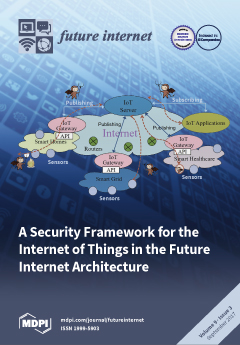The expansion of telecommunication technologies touches almost all aspects life that we are living nowadays. Indeed, such technologies have emerged as a fourth essential utility alongside the traditional utilities of electricity, water, and gas. In this context, Cloud Data Center Networks (cloud-DCNs) have
[...] Read more.
The expansion of telecommunication technologies touches almost all aspects life that we are living nowadays. Indeed, such technologies have emerged as a fourth essential utility alongside the traditional utilities of electricity, water, and gas. In this context, Cloud Data Center Networks (cloud-DCNs) have been proposed as a promising way to cope with such a high-tech era and with any expected trends in future computing networks. Resources of cloud-DCNs are leased to the interested users in the form of services, such services come in different models that vary between software, platform, and infrastructure. The leasing process of any service model starts with the users (i.e., service tenants). A tenant asks for the service resources, and the cloud-provider allocates the resources with a charge that follows a predefined cost policy. Cloud resources are limited, and those cloud providers have profit objectives to be satisfied. Thus, to comply with the aforementioned promise, the limited resources need to be carefully allocated. Existing allocation proposals in the literature dealt with this problem in varying ways. However, none proposes a win-win allocation model that satisfies both the providers and tenants. This work proposes A Rational Allocation Approach in Cloud Data Center Networks (ARAAC) that efficiently allocates the available cloud resources, in a way that allows for a win-win environment to satisfy both parties: the providers and tenants. To do so, ARAAC deploys the
Second Best-Price (SBP) mechanism along with a
behavioral-based reputation model. The reputation is built according to the tenants’ utilization history throughout their previous service allocations. The reputation records along with the adoption of the SBP mechanism allows for a
locally free-equilibrium approach that allocates the available cloud-DCN resources in an
efficient and
fair manner. In ARAAC, through an auction scenario, tenants with positive reputation records are awarded by having the required resources
allocated at prices that are
lower than what they have offered. Compared to other benchmark models, simulation results show that ARAAC can efficiently
adapt the behavior of those
rational service-tenants to provide for better use of the cloud resources, with an increase in the providers’ profits.
Full article





